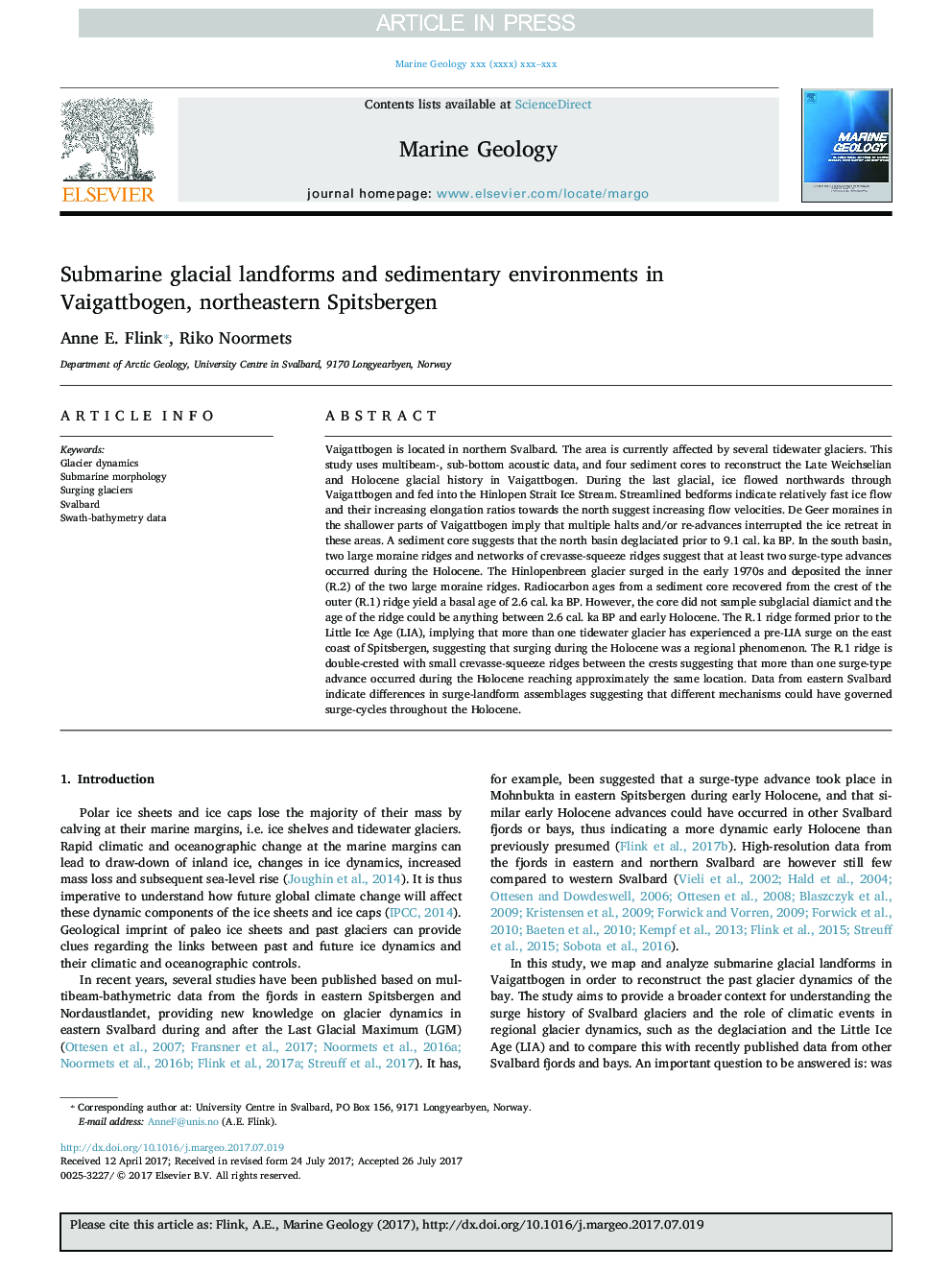| کد مقاله | کد نشریه | سال انتشار | مقاله انگلیسی | نسخه تمام متن |
|---|---|---|---|---|
| 8911957 | 1639050 | 2018 | 20 صفحه PDF | دانلود رایگان |
عنوان انگلیسی مقاله ISI
Submarine glacial landforms and sedimentary environments in Vaigattbogen, northeastern Spitsbergen
دانلود مقاله + سفارش ترجمه
دانلود مقاله ISI انگلیسی
رایگان برای ایرانیان
موضوعات مرتبط
مهندسی و علوم پایه
علوم زمین و سیارات
ژئوشیمی و پترولوژی
پیش نمایش صفحه اول مقاله

چکیده انگلیسی
Vaigattbogen is located in northern Svalbard. The area is currently affected by several tidewater glaciers. This study uses multibeam-, sub-bottom acoustic data, and four sediment cores to reconstruct the Late Weichselian and Holocene glacial history in Vaigattbogen. During the last glacial, ice flowed northwards through Vaigattbogen and fed into the Hinlopen Strait Ice Stream. Streamlined bedforms indicate relatively fast ice flow and their increasing elongation ratios towards the north suggest increasing flow velocities. De Geer moraines in the shallower parts of Vaigattbogen imply that multiple halts and/or re-advances interrupted the ice retreat in these areas. A sediment core suggests that the north basin deglaciated prior to 9.1 cal. ka BP. In the south basin, two large moraine ridges and networks of crevasse-squeeze ridges suggest that at least two surge-type advances occurred during the Holocene. The Hinlopenbreen glacier surged in the early 1970s and deposited the inner (R.2) of the two large moraine ridges. Radiocarbon ages from a sediment core recovered from the crest of the outer (R.1) ridge yield a basal age of 2.6 cal. ka BP. However, the core did not sample subglacial diamict and the age of the ridge could be anything between 2.6 cal. ka BP and early Holocene. The R.1 ridge formed prior to the Little Ice Age (LIA), implying that more than one tidewater glacier has experienced a pre-LIA surge on the east coast of Spitsbergen, suggesting that surging during the Holocene was a regional phenomenon. The R.1 ridge is double-crested with small crevasse-squeeze ridges between the crests suggesting that more than one surge-type advance occurred during the Holocene reaching approximately the same location. Data from eastern Svalbard indicate differences in surge-landform assemblages suggesting that different mechanisms could have governed surge-cycles throughout the Holocene.
ناشر
Database: Elsevier - ScienceDirect (ساینس دایرکت)
Journal: Marine Geology - Volume 402, 1 August 2018, Pages 244-263
Journal: Marine Geology - Volume 402, 1 August 2018, Pages 244-263
نویسندگان
Anne E. Flink, Riko Noormets,